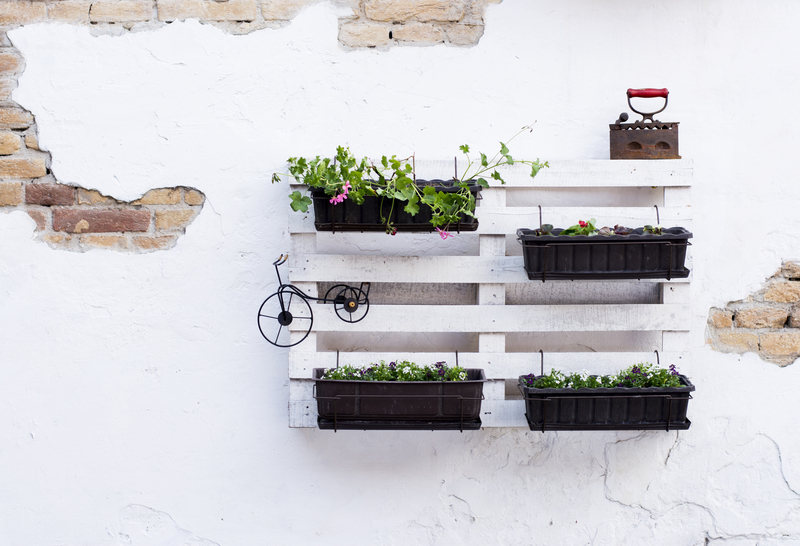Simple Ways to Cut Down Costs on Bulky Waste Item Disposal
Bulky waste items--from old mattresses and worn-out sofas to broken appliances and garden debris--can be a real headache for homeowners and businesses alike. The cost of disposing of large, cumbersome junk often takes people by surprise, but the good news is that there are many cost-saving methods for bulky waste disposal. Whether you're preparing for a move, decluttering, or upgrading your furniture, this comprehensive guide will help you discover simple, practical, and affordable solutions for large item removal. Read on to learn how to cut down on bulky waste disposal expenses while being environmentally conscious!

What is Bulky Waste, and Why Does Disposal Cost So Much?
The term bulky waste refers to large items that can't fit in regular refuse bins or standard municipal waste collections. This includes furniture, white goods (like refrigerators and washing machines), mattresses, carpets, and other oversized household or commercial items. The cost of disposing of bulky items can escalate due to:
- Special handling requirements for hazardous materials (like fridges containing refrigerant).
- Manual labor needed for loading and transportation.
- Landfill fees and recycling processing costs.
- Restrictions on what can be dumped or burned.
But don't worry--there are countless ways to cut down bulky waste disposal prices and make the process both eco-friendly and budget-friendly.
1. Take Advantage of Community Collection Events
Many municipalities host scheduled bulky waste collection days throughout the year. On these dates, residents and sometimes businesses can place large items at the curb for free or low-cost pickup by city services. Participating in these events can save you substantial disposal costs.
Tips for Maximizing Savings at Community Events:
- Mark your calendar for collection dates--check your city or county website.
- Group your bulky waste items together in advance.
- Follow guidelines on item type and placement to avoid rejection.
- Coordinate with neighbors to combine loads and reduce trips or service costs.
*If you miss municipal events, ask about year-round drop-off locations at local transfer stations or recycling centers.*
2. Repurpose, Donate, or Sell Usable Items
Before sending anything to the landfill, consider reusing, donating, or selling your bulky waste. Not only does this lower disposal volume (and costs!), but it extends the life of useful items and supports the community.
- Repurpose: Get creative! Transform a broken dresser into a garden planter or turn old pallets into outdoor furniture.
- Donate: Charities, shelters, and non-profits often accept furniture, appliances, and more--check guidelines on what they accept.
- Sell: Use online marketplaces like Facebook Marketplace, Craigslist, and Gumtree to find someone who needs what you no longer want.
These options typically cost nothing and sometimes even put money back in your pocket!
3. Break Down Bulky Items Yourself
One of the best ways to save money on bulky waste item removal is to dismantle items yourself. Many disposal services charge by item or volume, so reducing item size can mean significant savings.
- Use basic tools (screwdrivers, hammers, saws) to take apart bed frames, wardrobes, or sofas.
- Flatten boxes and cut longer items into smaller pieces.
- Bag or bundle parts for easier (and sometimes less expensive) collection.
*Always check local regulations--some services require items to be unassembled, while others require intact items for safety reasons.*
4. Rent or Share a Skip Bin with Others
For larger clean-ups, renting a skip bin (aka dumpster or roll-off container) is convenient but can be costly. Reduce the price by:
- Splitting the cost with friends, family, or neighbors who also need to dispose of bulky waste.
- Choosing the smallest bin that will suffice--don't overestimate your needs.
- Using "wait and load" services for quick pickups, which often cost less than multi-day rentals.
Tip: Always ask about prohibited items and weight limits to avoid extra charges.
5. Schedule a Bulk Pick-Up with Your Local Council
Most municipalities (and some waste management companies) offer scheduled bulk pickups for large items, often for a small fee. Book early, as slots can fill up quickly during busy seasons.
- Group multiple items to make the most of your slot (there's often a per-trip, not per-item, fee).
- Clearly label bulky waste for pickup and follow all prepping instructions.
- Ask your council about possible discounts for seniors, low-income residents, or special circumstances.
This is one of the most straightforward options for affordable bulky waste removal.
6. Compare Quotes from Private Junk Removal Companies
Professional junk removal services offer quick, hassle-free collection for virtually any large item. Prices can vary considerably, so:
- Get written quotes from at least three local providers.
- Ask about weight/volume limits, surcharges, and "by-the-item" vs. "by-the-load" pricing.
- Look for deals or discounts for first-time customers or combined services (e.g., moving + disposal).
- Check reviews to ensure the company disposes of waste responsibly.
Pro-tip: Some companies charge less if your items are curbside and easily accessible!
7. Use Household Waste Recycling Centres
Taking items directly to a local Recycling Centre (also known as a tip or civic amenity site) is usually cheaper than curbside collection or private junk removal.
- Transport your items in your own vehicle or rent a van for larger loads.
- Separate waste by material (wood, metal, electronics, upholstery) to ensure proper recycling.
- Check opening hours and rules on acceptable waste.
Benefit: Many centres recycle much of your bulky waste--this is both eco-friendly and can lower your overall disposal cost.
8. Upcycle or Offer Items for Free
If your items are still in reasonable shape (or someone could use them for parts or materials), offer them for free on 'freecycle' websites, social media groups, or community bulletin boards.
- List items on Freecycle, Nextdoor, or local Facebook groups.
- Use the "curb alert" method--place items at the curb with a "free" sign. Many useful items are quickly taken!
Giving things away saves money on disposal and is often the quickest way to get rid of something bulky.
9. Join Bulk Waste Reuse Networks
Some towns and cities have organized reuse schemes for bulky waste collection. These charities or social enterprises pick up good-condition items for resale, redistribution, or material recovery.
- Check for local furniture banks, appliance repair workshops, or nonprofit collections.
- Some organizations offer pickups for free or a nominal charge--less than landfill or junk removal fees.
Bonus: Donating to these programs supports local jobs, people in need, and sustainable waste solutions.
10. DIY Bulky Waste Disposal--Do It Legally!
You might consider tackling the task yourself by hiring a truck/van and hauling everything to the tip. This can be a very cheap bulky item disposal method for those with access to transport and the ability to lift heavy items.
- Plan your route to minimize mileage (and fuel costs).
- Ask friends or family for an extra hand with heavy lifting.
- Never dump illegally or fly-tip--fines are steep and environmentally damaging.
Most tips have limits on business waste or how often you can bring large loads. Always check the rules beforehand.
11. Check for Manufacturer Take-Back Programs
Some manufacturers and retailers offer free or discounted bulky waste recycling when you buy a replacement product (such as a new mattress, sofa, or appliance).
- Ask about free old item removal when you make your purchase.
- Many companies recycle or refurbish old goods to minimize landfill waste.
This is an easy and responsible way to dispose of large items affordably.
FAQs on Bulky Waste Disposal Costs
How much does it cost to dispose of a bulky item?
Fees vary widely by region and method, but expect to pay anywhere from $20 to $100 per item for curbside pick-up, and between $150 and $500 for full-load private junk removal. Many recycling centers accept domestic bulky waste for free or a small fee.
What items are classed as "bulky waste"?
- Furniture (sofas, beds, armchairs, tables, wardrobes)
- Large appliances (fridges, freezers, ovens, washing machines)
- Mattresses and box springs
- Carpets and large rugs
- Garden waste (fencing, sheds, lawnmowers)
- Large toys, bicycles, and exercise equipment
Are there any items that can't be put in landfill?
Yes! Hazardous materials--like asbestos, paint, vehicle parts, and electronics--usually require special disposal. Always check local regulations.

Eco-Friendly Bulky Waste Disposal: Save Money & Help the Planet
Many of the cheapest ways to dispose of bulky waste also happen to be the best for the environment. Repurposing, donating, and recycling bulky items keeps resources in use and out of landfill, slashing both cost and carbon footprint.
- Find specialty recyclers for appliances and electronics.
- Donate or offer materials to local "scrap" or upcycling artisans.
Conclusion: Save Money and Stress on Bulky Waste Item Disposal
By using these simple and effective methods to reduce bulky waste disposal costs, you can keep more money in your pocket, help out others, and protect the environment. From leveraging community collection programs to selling or gifting items, and from upcycling to sharing a skip, there is a perfect solution for every situation.
- Plan ahead and act early to access free or low-cost options.
- Combine multiple savings strategies for the best results.
- Don't forget about local regulations and environmental impact.
With a little research and creativity, cutting down on bulky waste disposal costs can be simple, rewarding, and even fun. Start today and make bulky junk removal a cost-effective and responsible part of your cleaning or renovation project!